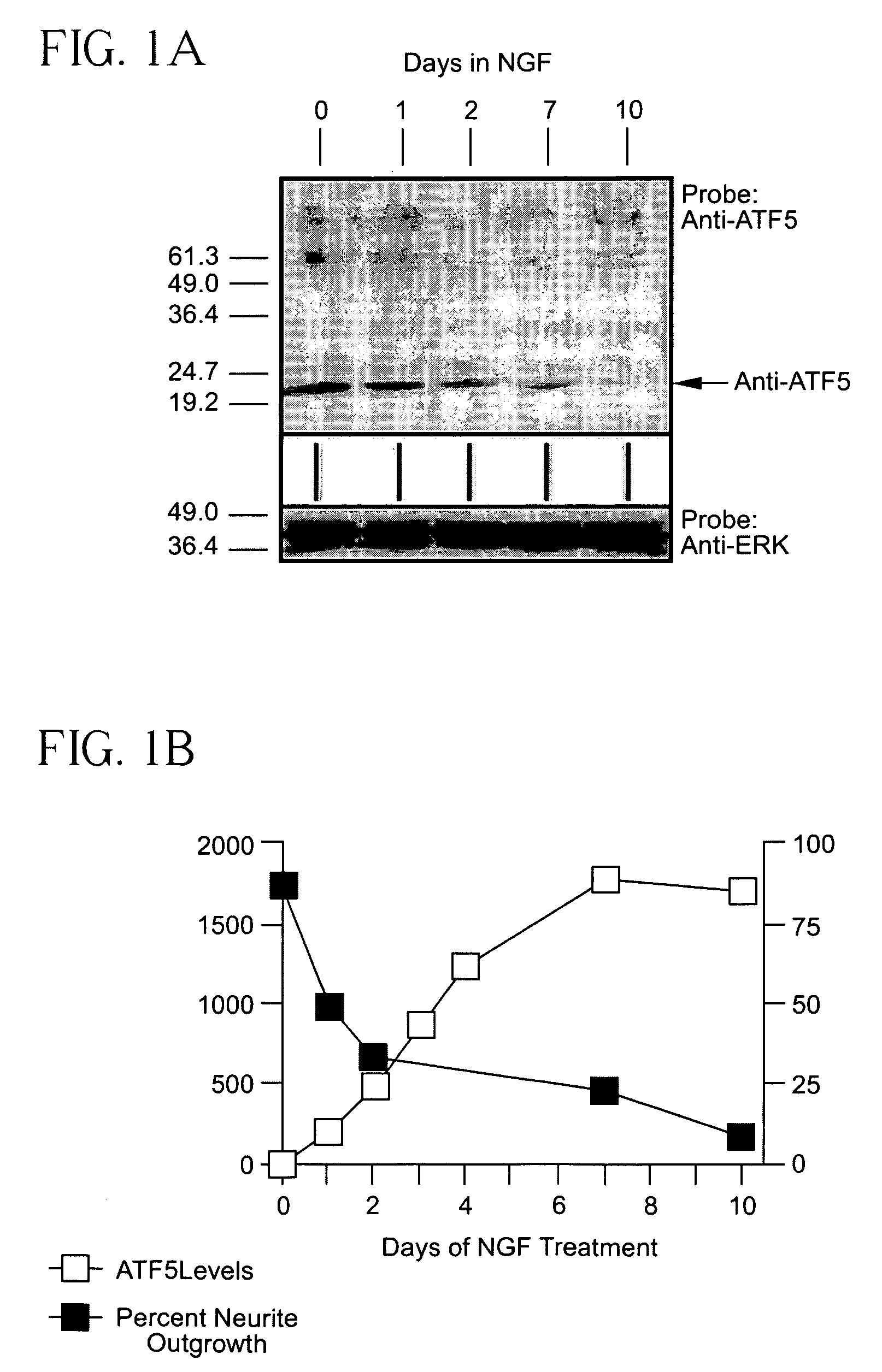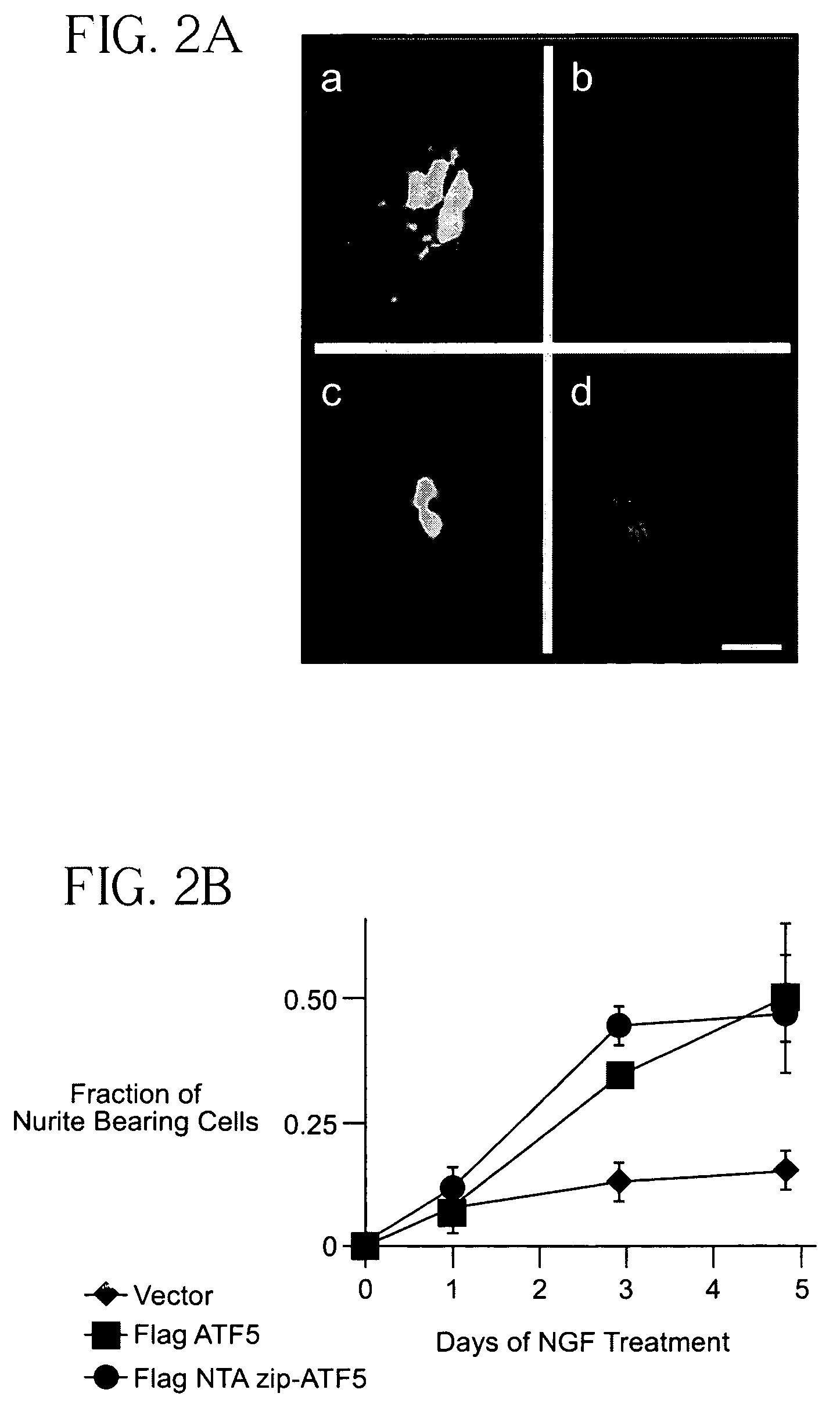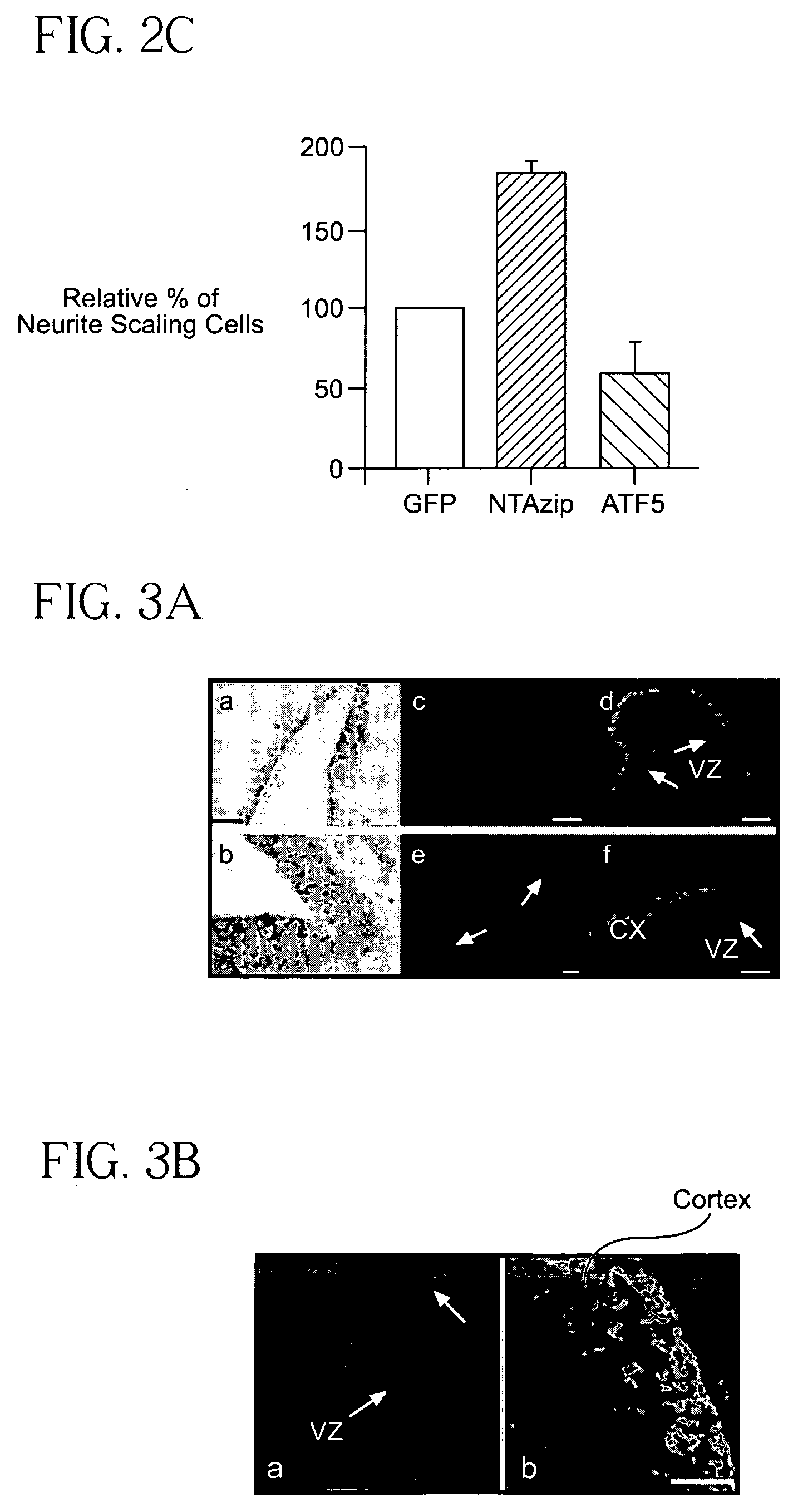Methods for regulating differentiation of neural cells and uses thereof
a neural cell and differentiation technology, applied in the field of neural cell differentiation regulation, can solve the problems of inability to cure alzheimer's disease, inability to effectively promote differentiation, and high cost of current treatments for various demyelinating conditions, so as to improve differentiation and assess the ability of candidate agents
- Summary
- Abstract
- Description
- Claims
- Application Information
AI Technical Summary
Benefits of technology
Problems solved by technology
Method used
Image
Examples
example 1
Reagents
[0148] Cell-culture media, RPMI 1640 and DMEM, and molecular biology reagents, Taq platinum DNA polymerase, SuperScript II reverse transcriptase, and LipofectAMINE 2000, were obtained from Invitrogen, Inc. (Carlsbad, Calif.). Donor horse and fetal bovine serum were obtained from JRH Biosciences, Inc. (Lenexa, KA). The Marathon cDNA amplification library kit was obtained from Clontech (Palo Alto, Calif.), and PCR primers were obtained from Integrated DNA Technologies or Life Technologies, Inc. Anti-FLAG M2 antibody was from Sigma Corp. (St. Louis, Mo.).
example 2
Cell Culture
[0149] PC12 cells were grown on collagen-coated dishes, as previously described (Greene et al., Establishment of a noradrenergic clonal line of rat adrenal pheochromocytoma cells which respond to nerve growth factor. Proc. Natl. Acad. Sci. USA, 73: 2424-28, 1998), with or without human recombinant nerve growth factor (NGF) (Genentech, Inc.). Dissociated cultures of telencephalic cells were prepared from E14 Sprague-Dawley rats. Telencephalic cells were trypsinized (0.05% in 0.53 mM EDTA; Invitrogen, Inc.) for 30 min (Li et al., Neuronal differentiation of precursors in the neocortical ventricular zone is triggered by BMP. J. Neurosci., 18: 8853-62, 1998), and dissociated cells were centrifuged and re-suspended in DMEM containing 5% FBS, 10 ng / ml EGF, and 20 ng / ml bFGF, then plated on 24-well dishes coated with polylysine at 3-5×105 cells per well (Laywell et al., Multipotent neurospheres can be derived from forebrain subependymal zone and spinal cord of adult mice after...
example 3
Cloning of Full-Length rATF5 and Plasmid Constructs
[0151] SAGE tag, CATGAGAACCTAGTC, was found in rat EST, UI-R-G0-ur-g-10-0-UI (GenBank™ / EBI accession number AI576016), which, in turn, showed high homology with the 3′ end of murine ATF5. To clone the open-reading frame of rat ATF5, PCR antisense primer 5′-CTTGGTTTCTCAGTTGCAC-3′ (derived from the sequence of the above EST) was used for 5′ RACE PCR, using the Clontech Marathon kit according to the manufacturer's protocol. The first-strand cDNA PCR template was prepared from 5 μg of PC12 cell total RNA, by reverse transcription with Superscript II. The products of the 5′ RACE PCR included the second of 2 potential Kozak start sites.
[0152] Cloning of the rATF5 open-reading frame that included the first potential start site was achieved with sense PCR primer, 5′-TGCACCTGTGCCTCAGCCATGTC-3′. This sequence was obtained from an EST sequence (GenBank™ / EBI accession number AW917099) that overlapped with the 5′ end of the 5′ RACE PCR product...
PUM
 Login to View More
Login to View More Abstract
Description
Claims
Application Information
 Login to View More
Login to View More - R&D
- Intellectual Property
- Life Sciences
- Materials
- Tech Scout
- Unparalleled Data Quality
- Higher Quality Content
- 60% Fewer Hallucinations
Browse by: Latest US Patents, China's latest patents, Technical Efficacy Thesaurus, Application Domain, Technology Topic, Popular Technical Reports.
© 2025 PatSnap. All rights reserved.Legal|Privacy policy|Modern Slavery Act Transparency Statement|Sitemap|About US| Contact US: help@patsnap.com



